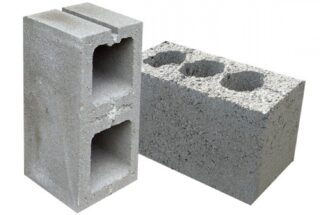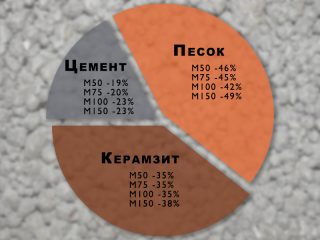Expanded clay blocks have been used for over 60 years. Material characteristics and laying technology must be taken into account at all stages of construction, starting from design.
Content
Advantages and disadvantages of expanded clay houses
When choosing a material for construction, take into account its consumer properties and technical parameters.
Benefits houses made of expanded clay concrete blocks:
- In the production of building materials, cement, expanded clay and sand are used - completely natural materials; a masonry mixture is also prepared from cement and sand.
- Expanded clay concrete is almost twice as good as silicate brick, retains heat in cold weather, the house warms up less in the summer sun.
- The service life of quality products is 70 years, according to the tests carried out. The period of operation is extended by protecting the walls with external decoration.
- The material does not burn.
- Any type of plaster adheres perfectly to a rough surface.
- Pathogenic microorganisms and mold do not multiply on the walls and inside the blocks, since moisture evaporates in a timely manner and there is no nutrient medium for harmful formations.
- Large dimensions of expanded clay bricks speed up the laying. The light weight makes work easier, and the solution is inexpensive.
- For load-bearing walls and partitions, blocks of expanded clay concrete and expanded clay concrete slabs of various geometries are produced.
To the disadvantages include consumer properties:
- Unloading is carried out manually or by crane mechanisms if the goods are placed on pallets.
- The walls need finishing because of the unpresentable appearance.
Pros and cons of expanded clay concrete
Environmental friendliness
Excellent thermal insulation properties
Durability
Good sound insulation
Fire safety
Excellent adhesion
Vapor permeability
Manufacturability of construction
Construction speed
Fragility
The need for finishing









